Barrow Hills Diamond Jubilee
A few reminisces and photos by John Harvey
2011 was the 60th anniversary of the school's foundation in 1951, and its Diamond Jubilee celebration was held on Sunday 10 June. Mass was
celebrated by Fr. Martin Ashcroft (Barrow Hills 1959-1963) followed by speeches and an "if wet indoors" lunch.
John Harvey, Nick Crisell and Simon Baynham in the old panelled library
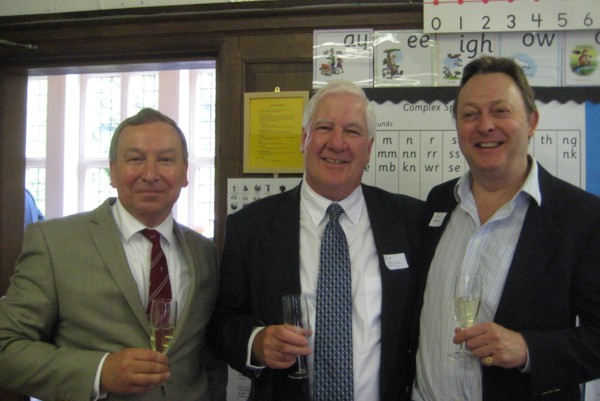
Nick was a couple of years ahead of us. His son Paul teaches at the school as Head of Junior Prep, and his children in turn attend as pupils.
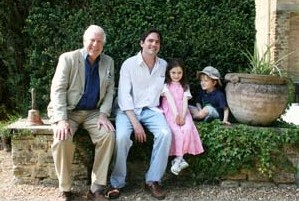
The 1950s classroom block is basically unaltered, with the collapsible dividing partitions still in use. These were opened to make one large room for
evening prep, the Saturday evening film show and Sunday morning letter writing.
This looks very much like the cupboard in the 4th form classroom that Br. Gerald used as a tuck shop before a purpose-built shop was provided in the new Kean classroom block.
The first-floor landing now wall-to-wall carpeted (brown lino in our day) showing the well-preserved Catterson-Smith arts and crafts ceiling plasterwork.
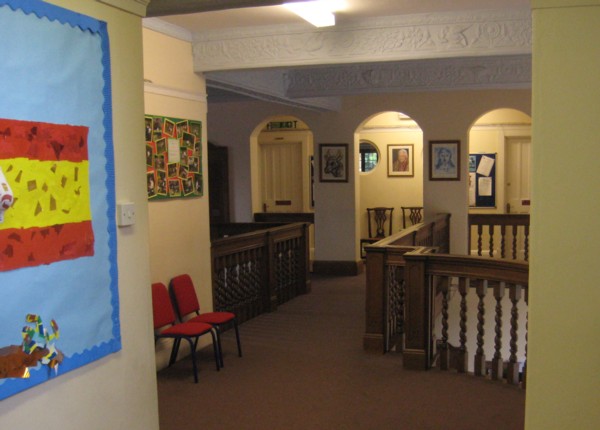
First year dormitory, now a classroom. The little square fire excape hatches were knocked through the walls of each adjoining room, fortunately only ever used in the occasional fire drill.
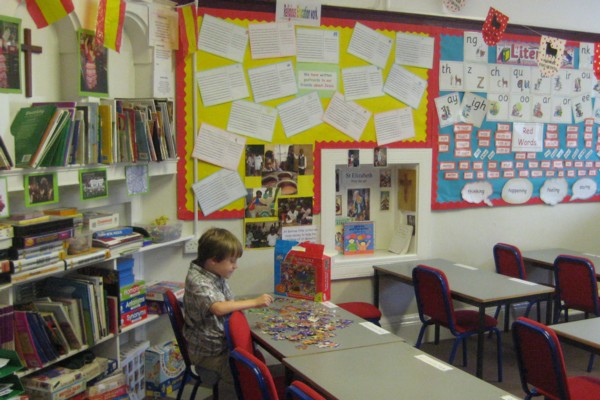
Remember Fr. David's bedroom off the first-floor landing? He would invite us in to be "tortured" with an electric shock machine - see how long you could hold the handles as the voltage was increased. Now a store room.
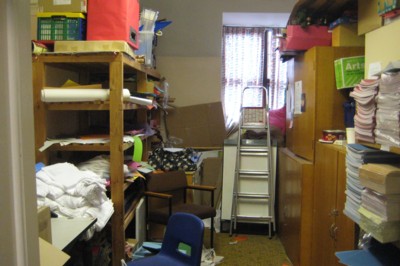
The larger of the two first-floor rooms that were knocked together to form the refectory, filled with long tables, up to 12 boys to a table including the ends. The wall is now reinstated.
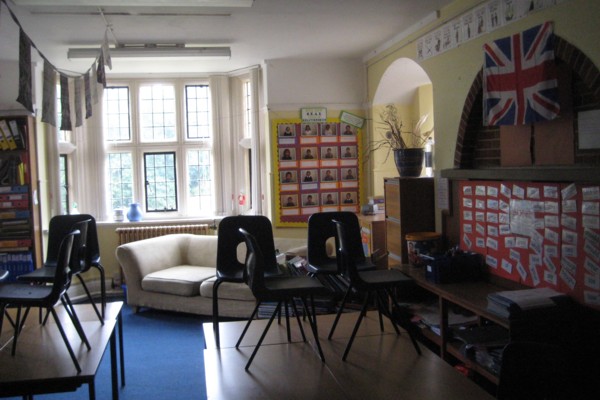
The playground bell is still there just outside the archway, calling us back to class. In our day there was a large oil tank in front, which was in turn shielded by bushes.

The "Quad", where we used to roller skate.
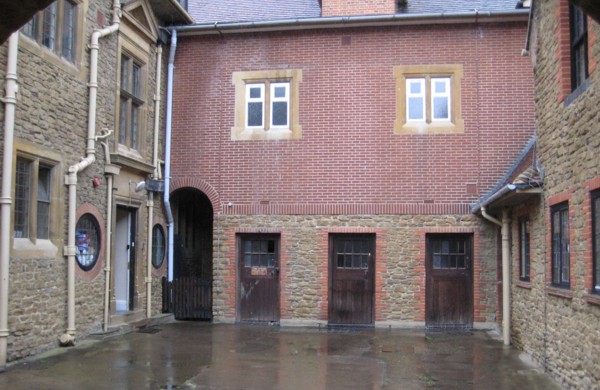
The new (in 1962) hard playground. Fr. Bede said that the original plans for the new classroom block had windows down the long wall - he had them deleted so that the playground could be used for ball games.
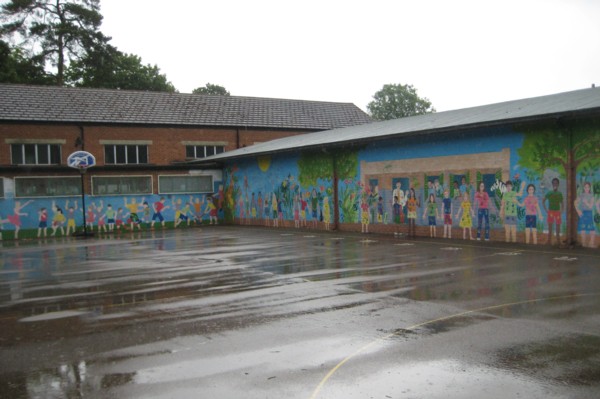
The gym (originally a barn we were told) now has a permanent stage. In our day the stage was assembled from a kit of wooden components for performances and dismantled afterwards.
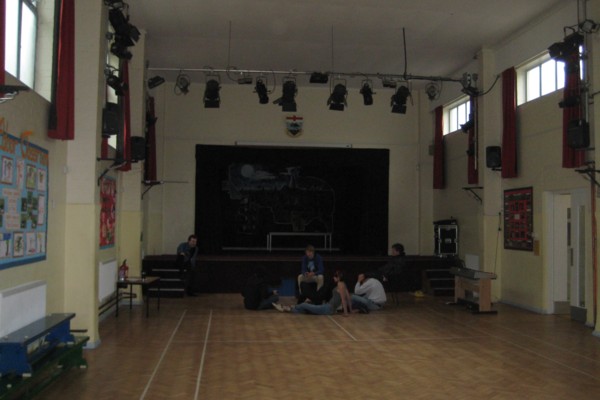
A historical footnote: the music shelves in the chapel balcony
(which was then only about 4 feet deep, now widened) hide a hole that was
knocked through the wall in the 1950s to install the
large Compton electronic organ console (it was clearly not there in
the original balcony).
The hole was covered by a large panel in the corridor outside and this could be removed for servicing the organ, which required regular maintenance
of its belt-driven tone generators and valve amplifiers. The reinstated plasterwork can be seen in the corridor if you know what to look for.
The school roll of 66 boys in 1955
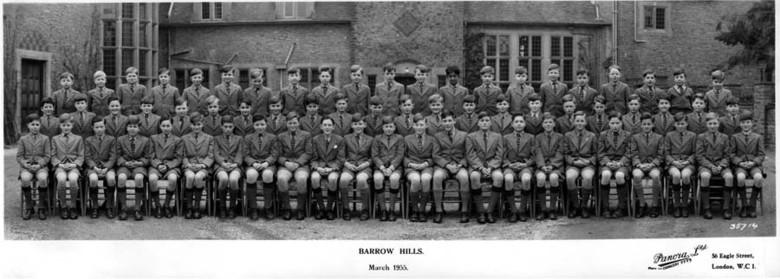
had expanded to over 90 boys by 1958

and remained at just under 100 in the early 1960s.